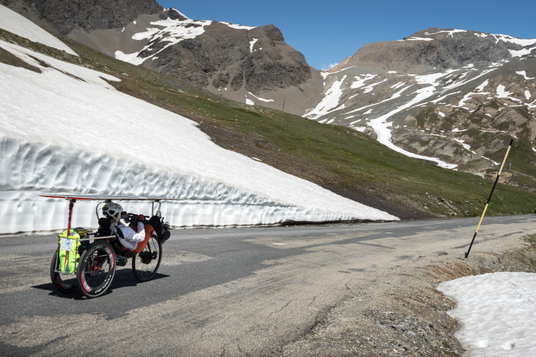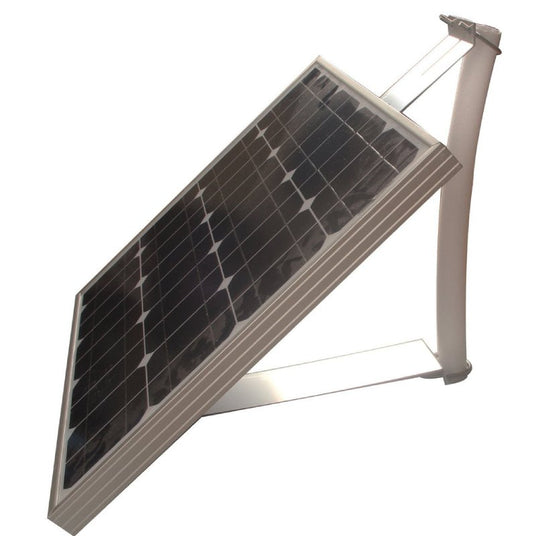Measure what matters—rain, wind, PM2.5, soil, river levels—without trenching AC or swapping batteries every season.
LinkSolar builds compact, field-serviceable solar for masts, enclosures, and low-draw sensor stacks so your station logs through storms and short winter days.
Who This Is For
- Ridge-top masts, riverbanks, farms, and construction sites where AC runs are impractical.
- Installations facing canopy shade, frost/icing, or fast weather swings.
- Sensor stacks that must run unattended (data logger + radio) with predictable uptime.
- Teams that want fewer truck-rolls via smarter sizing and service-friendly wiring.

Sizing That Survives Winter
- Budget by energy/day. List each device’s typical watts × hours to get Wh/day. Include logger, radio, GPS time sync, and any heated sensors.
- Design to the worst month. Divide Wh/day by worst-month sun-hours to get panel watts.
- Account for losses (20–30%). Controller efficiency, wiring, temperature, DC-DC.
- Choose autonomy. 2–3 days for typical sites; 4–5+ days where snow or storms linger.
- Sleep smarter. Use duty cycles for radios/samplers; batch uploads when voltage recovers.
Example (logger + LoRa gateway):
Logger 0.6 W × 24 h = 14.4 Wh; Radio 1.2 W × 24 h = 28.8 Wh → 43.2 Wh/day.
Losses 25% → ~54 Wh/day. Worst month 2.5 sun-hours → ~22 W panel (round up to 30 W).
Autonomy 4 days → ~216 Wh battery (≈ 18 Ah usable @ 12 V).

Placement & Mounting That Beat Oversizing
- Height over shade. Mount above railings and nearby trees to avoid moving shadows.
- Aim for winter. 30–45° tilt improves short-day harvest and sheds snow/ice.
- Short, labeled wiring. Keep DC runs short; specify AWG per distance; add a drip loop at the gland.
- Service on the ground. Enclosure at chest height with slack, labels, and a clear disconnect.
Power Architectures That Actually Work
- Direct-DC sensor stacks. Panel → MPPT/PWM → 12 V battery → logger/radio via buck converters. Add low-voltage disconnect (LVD) to prevent brownouts and data corruption.
- Mixed 5/12 V rails. Separate rails for radios vs. sensors to avoid noise; keep grounds clean.
- Cold weather notes. Choose chemistries rated for site temps; spec vented or desiccant enclosures; leave air-gap under modules for cooling.
Build Your Weather-station Solar Kit
Work We’ve Delivered — Weather & Environmental
| Customer / Use Case | Solution (key components) | Panel & Construction | Outcome |
|---|---|---|---|
Hilltop Weather Mast | Panel above cross-arms; 35° tilt; chest-height enclosure; labeled in-line fuse; winter re-aim | Framed 30 W; stainless clamps | No snow-day gaps; cleaner winter voltage traces |
River Level + Rain Gauge | Separate rails for radio vs. sensors; surge path to ground; torque-marked fasteners | Framed 20–40 W; air-gap under panel | Stable uploads in storms; no nuisance resets |
Farm Soil Station | Logger + LoRa node; weekly voltage/harvest check; color-coded harness; desiccant pack | 20–30 W array; 30–45° tilt | Fewer site visits; steady data through cloudy spells |
Urban Air-Quality Node (PM) | Enclosure heat-managed; IR fan duty-cycled; direct DC into sensor/MCU; injector removed to save overhead | Small array + buck converters | Lower idle draw; improved nighttime runtime |
* Harvest varies with season, shading, temperature, and duty cycle. For exact sizing, send device datasheets and duty profile.
Frequently Asked Questions
Solar power for weather and environmental stations
How do I size for short winter days without overbuying?
How do I size for short winter days without overbuying?
Budget energy/day, design to worst-month sun-hours, add 20–30% losses, then pick autonomy (2–5 days) based on your weather risk.
Can one small panel run a sensor stack and a radio all year?
Can one small panel run a sensor stack and a radio all year?
Often yes for low-draw stacks—if the panel is placed above shade, aimed for winter, and paired with proper charge control and autonomy.
Do I need MPPT?
Do I need MPPT?
MPPT helps with winter/partial shade and higher-voltage strings. For single 12 V modules and modest loads, a quality PWM can be sufficient.
How do I avoid data loss during storms?
How do I avoid data loss during storms?
Use an LVD to prevent brownouts, spec adequate autonomy, and batch uploads when voltage recovers.
What about cold-weather batteries?
What about cold-weather batteries?
Select chemistries rated for site temps; consider heater mats only if harvest and enclosure allow.



